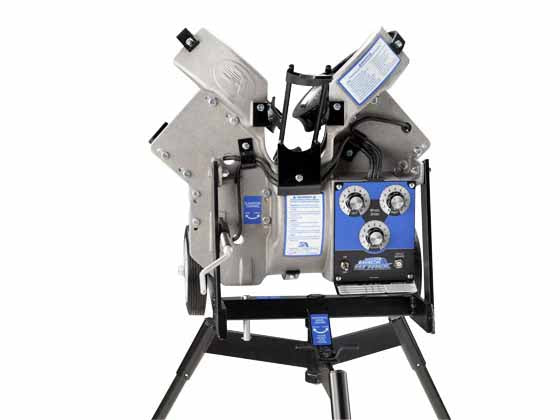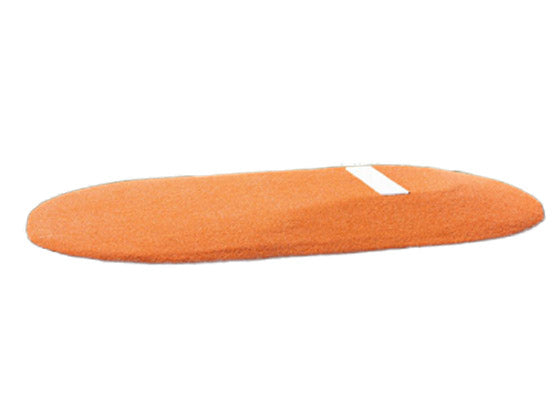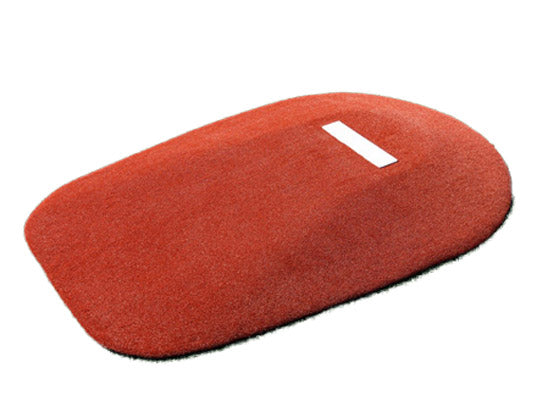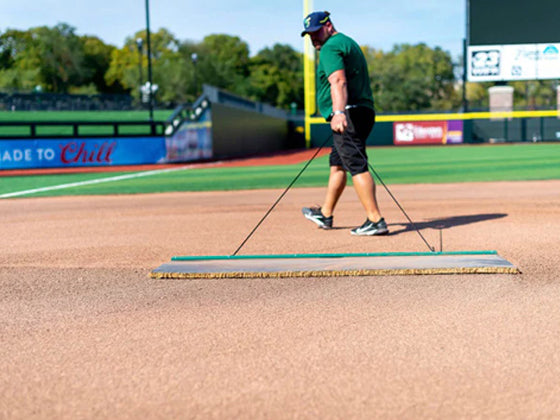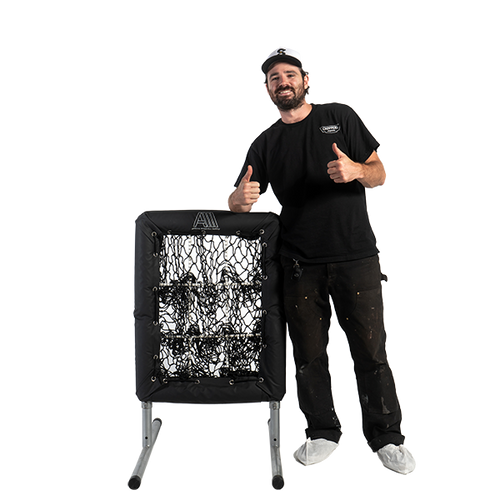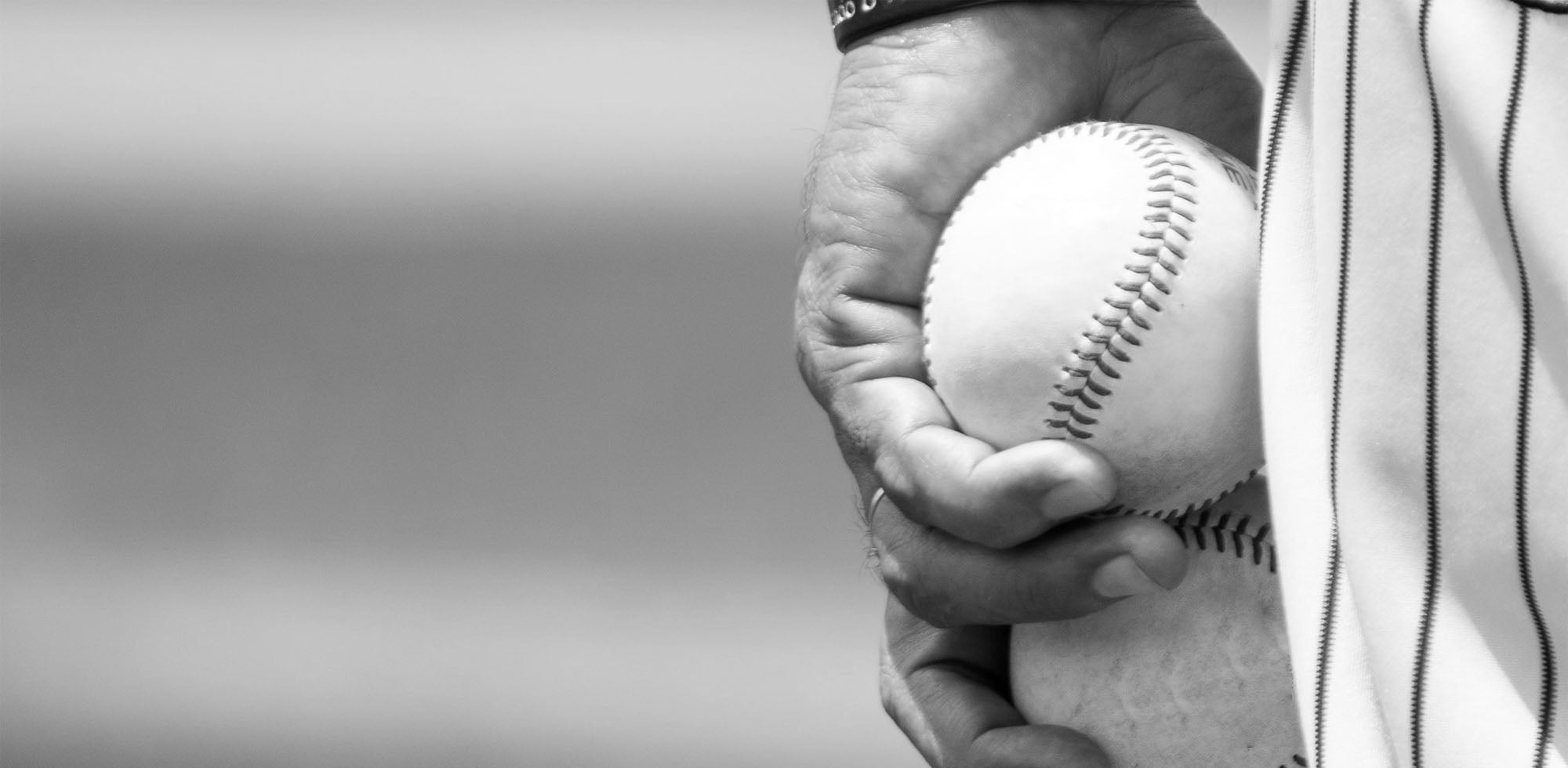Whether you're a seasoned coach or a dedicated parent helping your child improve their game, you know that consistent, quality practice is key. And when it comes to baseball and softball, few things can elevate those training sessions like a reliable pitching machine. This is especially true if you are debating on two wheel vs three wheel pitching machines as they are the most popular. This blog post will go deep on these machines.
Understanding Pitching Machines
Pitching machines are a valuable asset for baseball training, allowing players to fine-tune their swing mechanics, timing, and hand-eye coordination without the pressure of a live pitcher. Pitching machines help players build confidence and consistency at the plate. But with a variety of pitching machines on the market, it's easy to feel overwhelmed.
How do you choose the right pitching machine for your specific needs? A common point of decision lies in choosing between a two-wheel and a three-wheel pitching machine. Understanding the differences in design, performance, and suitability for different skill levels can make all the difference in your training. And if you are looking for pitching machines online, we have some quality stock waiting for you.
Two-Wheel vs Three-Wheel Pitching Machines: Key Differences

This section aims to give you a comprehensive understanding of the two main types of pitching machines and which is suitable for you. We will break down their mechanics, performance variations, unique features, and the cost of owning each.
Mechanics of Two-Wheel Pitching Machines
Two-wheel pitching machines operate using, you guessed it, two spinning wheels. The ball is fed between these wheels, and the speed at which they spin dictates the speed of the pitch. These wheels are usually positioned at a slight angle, creating a backspin on the ball that simulates a fastball.
However, with fewer wheels and a more basic design, two-wheel machines generally offer a limited range of pitch styles and less control over movement. They are generally easier to operate, maintain, and transport. Shop two wheel pitching machine complete range with us.
Mechanics of Three-Wheel Pitching Machines

The key difference when comparing two wheel vs three wheel pitching machine designs is that the three-wheel machine offers more control over the ball's trajectory and spin. They allow for a wider range of pitches like fastballs, curveballs, and sliders, more closely mimicking a live pitcher and creating a breaking ball.
They use a combination of wheel speed and pressure to achieve the different spin variations and are typically more complex to operate than their two-wheeled counterparts. However, that complexity often translates to versatility, making them a more valuable investment for serious players looking for diverse training experiences. Explore three wheel pitching machines in our premium collection.
Performance Comparison: Speed, Variety, and Accuracy

Understanding the performance difference between two wheel vs three wheel pitching machines is crucial to making the best decision for your needs. The two-wheel machine excels in delivering straight fastballs at varying speeds. This makes them suitable for basic batting practice and for players learning to hit for power and accuracy.
However, their limitation lies in their inability to produce diverse pitches like curveballs or sliders. For those, you'd have to look at a three-wheel machine. This versatility is ideal for more advanced training, forcing batters to adapt to different pitch movements and hone their hitting techniques across various scenarios.
In terms of speed, both machine types generally offer a broad range, often exceeding 70 miles per hour on the higher end. This range allows hitters to challenge themselves and refine their swing timings. The primary difference here lies in control.
Accuracy, a vital aspect of effective pitching machines, also shows differences. Two-wheel machines, while often perceived as less accurate due to their basic design, can still achieve reliable consistency. Three-wheel machines often boast higher accuracy levels. This is largely due to their design that enables finer adjustments to trajectory and movement, providing a greater level of precision.
Training Versatility: What Makes Each Machine Unique?
Let's look at the specific benefits each machine offers based on training requirements. Two-wheel machines are favored for beginners due to their simplicity. They are also popular for warm-up routines and soft toss drills.
Conversely, three-wheel machines are preferred for more specialized training, replicating game-like scenarios and challenging hitters to adjust to unpredictable pitch movements. This ability to diversify practice routines is invaluable as players progress to higher skill levels. Read our guide to learn how to choose the right pitching machine for different skill levels.
Two-Wheel vs Three-Wheel Pitching Machine Cost Analysis

Generally, two-wheel machines are less expensive than three-wheel options. If you're working with a tighter budget or seeking a machine for basic batting practice, a two-wheel machine may be the right option for your needs. However, it is important to factor in value for your money.
While they may require a higher upfront investment, the versatility, longevity, and training diversity offered by a three-wheel machine can provide long-term value. For example, some high-quality three-wheel pitching machines, like the Jugs BP or Hack Attack, are built to withstand years of use and come with warranties.
Ease of Use and Maintenance
When comparing the user-friendliness of two-wheel vs three-wheel pitching machines, two-wheel machines are generally considered more straightforward, requiring less setup time. However, the learning curve on a three-wheel machine is relatively quick, and many models are equipped with user-friendly interfaces for seamless operation.
Both types of machines typically require similar basic maintenance like cleaning and occasional part replacement.
Choosing the Right Pitching Machine Accessories
Beyond deciding on a two-wheel vs three-wheel pitching machine, your training setup can benefit from incorporating the right accessories. Accessories can amplify the effectiveness of your pitching machine and enhance your practice sessions.
Essential Pitching Machine Accessories
Investing in pitching machine accessories is key to maximizing your training potential. Accessories, from batting cage frames to portable pitching mounds, can drastically improve your experience. Here are some must-have accessories:
- Batting Cage Nets: A quality batting cage net provides a safe and controlled environment for practice, ensuring that the ball remains within a designated area. It is an essential safety measure for any batting practice setup.
- Pitching Mounds: A portable pitching mound provides a realistic pitching elevation, allowing hitters to practice against a ball released from a natural throwing height.
- Ball Feeders: A ball feeder attaches to your pitching machine, automating the ball delivery process and increasing the efficiency of your practice sessions. It eliminates the need for manually feeding each ball into the machine.
In addition to these essential accessories, consider investing in pitching machine balls specifically designed for use with pitching machines. These balls are often more durable and can withstand the high-velocity impact, ensuring a longer lifespan.
Matching Accessories to Your Pitching Machine and Skill Level
When selecting accessories, consider your pitching machine type. For instance, if you have a curveball pitching machine, you'll need a cage that can withstand pitches that break both horizontally and vertically. Some accessories, such as certain types of pitching machine balls, might be better suited for two-wheel machines than three-wheel ones, or vice versa.
Always choose accessories that align with your skill level and training goals. A high school baseball program, for example, might need a different grade of batting cage net than a young athlete who is just starting out with their first pitching machine.
Factors to Consider When Choosing a Pitching Machine
Choosing the right pitching machine involves assessing several key factors.
1. Skill Level
Beginner players might find two-wheel pitching machines easier to handle initially. They provide a consistent stream of fastballs, ideal for developing basic hand-eye coordination and swing mechanics. As players progress, a three-wheel machine's ability to deliver curveballs and sliders becomes increasingly beneficial for developing advanced hitting skills.
2. Training Goals
Clearly define your training objectives. Are you aiming to improve swing speed, perfect timing, or practice hitting various pitch types? If you're primarily focused on practicing fastball hitting, a two-wheel machine might suffice. However, for well-rounded skill development and game-like simulation, a three-wheel machine offers greater versatility.
3. Budget Considerations
Establish a realistic budget. Two-wheel machines are typically more budget-friendly, making them accessible for casual players or those with budget constraints. While three-wheel machines come at a higher price point, they offer a greater return on investment with their advanced features and extended lifespan.
Top Pitching Machine Brands to Consider
Navigating the variety of pitching machine brands can be overwhelming. Here’s a breakdown of some top brands known for their quality and performance:
- Spinball Sports: Known for their innovative designs, such as the Spinball Wizard, Spinball Sports offers a range of pitching machines suitable for various skill levels. Their machines are recognized for their versatility and ability to simulate various pitch types, making them a favorite among coaches and players.
- Heater Sports: Heater Sports is recognized for producing durable and reliable pitching machines for both baseball and softball. Their machines often come with impressive warranties, like a five-year warranty, ensuring long-term use and peace of mind for players and coaches alike.
- Sports Attack: Sports Attack provides a diverse lineup of pitching machines, catering to everyone from youth players to professionals. They are known for their high-quality, consistent performance, and the ability to simulate real-game pitching speeds and movements.
- Iron Mike: Iron Mike is a renowned brand in the baseball and softball world, offering robust pitching machines designed for serious training. Their machines feature arm-style mechanisms, mimicking the natural motion of a pitcher, making them ideal for realistic batting practice.
- Louisville Slugger: A household name in baseball equipment, Louisville Slugger offers pitching machines like the Blue Flame and Black Flame. Known for their simplicity, durability, and effectiveness, these machines cater to players of all levels. They provide reliable, consistent pitching, making them excellent training partners for developing swing mechanics and timing. We have a detailed comaprison of blue flame vs black flame pitching machines by this brand.
When choosing your pitching machine, it is important to conduct thorough research and consider factors such as budget, desired features, and brand reputation.
Conclusion
Deciding between a two wheel vs three wheel pitching machine for your baseball or softball practice boils down to individual needs and goals. A two-wheel machine shines in simplicity, affordability, and effectiveness for fundamental batting practice. Conversely, a three-wheel machine offers unparalleled versatility with its diverse pitch range and accuracy. Understanding your specific requirements, whether it's basic training or simulating complex game situations, will help make the right decision for you.
Q: What are the main differences between a 2 wheel and a 3 wheel pitching machine?
A: The primary difference lies in their design and functionality. A 2 wheel pitching machine uses two wheels to throw the ball, typically offering fastballs and limited pitch types. In contrast, a 3 wheel pitching machine has an additional wheel that allows for greater pitch variety, including breaking balls and off-speed pitches, making it suitable for more advanced training.
Q: Which type of pitching machine is better for baseball batting practice?
A: The best pitching machine for baseball batting practice depends on your needs. A 3 wheel pitching machine is often recommended for its ability to simulate various pitch types, such as sliders and curveballs, which is beneficial for players looking to enhance their hitting skills against different pitch styles.
Q: Can a 3 wheel pitching machine throw at high speeds like 100 mph?
A: Yes, many 3 wheel pitching machines are designed to throw at high speeds, with some capable of reaching up to 100 mph. This makes them suitable for advanced players who need to practice against high-velocity pitches.
Q: Are 2 wheel pitching machines sufficient for youth baseball and softball players?
A: Yes, 2 wheel pitching machines can be sufficient for youth baseball and softball players, especially for beginners. They are generally more affordable and easier to operate, making them a good choice for team use and practice sessions focused on fundamental batting skills.
Q: How do 3 wheel pitching machines simulate breaking balls?
A: 3 wheel pitching machines simulate breaking balls by using the additional wheel to control the spin of the ball. By adjusting the speed and angle of each wheel, the machine can create various pitch types, including curveballs and sliders, allowing hitters to practice against realistic pitch movements.
Q: What is the best pitching machine for a team looking to practice both baseball and softball?
A: The best pitching machine for a team practicing both baseball and softball would be a versatile machine that can switch between pitching styles. Many manufacturers produce pitching machines that can throw real baseballs and softballs, offering a range of pitch types suitable for both sports.
Q: How do I choose between a 2 wheel and a 3 wheel pitching machine for my training needs?
A: When choosing between a 2 wheel and a 3 wheel pitching machine, consider your skill level and training goals. If you are a beginner or looking for a simple machine to throw fastballs, a 2 wheel pitching machine is ideal. However, if you require more advanced features, such as the ability to throw various pitch types and simulate game situations, a 3 wheel pitching machine would be a better investment.
Q: Can pitching machines be used for both baseball and softball?
A: Yes, many modern pitching machines can be used for both baseball and softball, making them versatile tools for practice. Be sure to select a machine that is specifically designed to handle both types of balls and can adjust the pitch settings accordingly.
Q: What features should I look for in a pitching machine to ensure it meets my needs?
A: When looking for a pitching machine, consider features such as pitch variety (fastballs, breaking balls, etc.), speed settings (mph), ease of adjustment, portability, and whether it can accommodate both baseball and softball. Additionally, look for machines that are durable and come from reputable pitching machine manufacturers.

 Contact Us
Contact Us